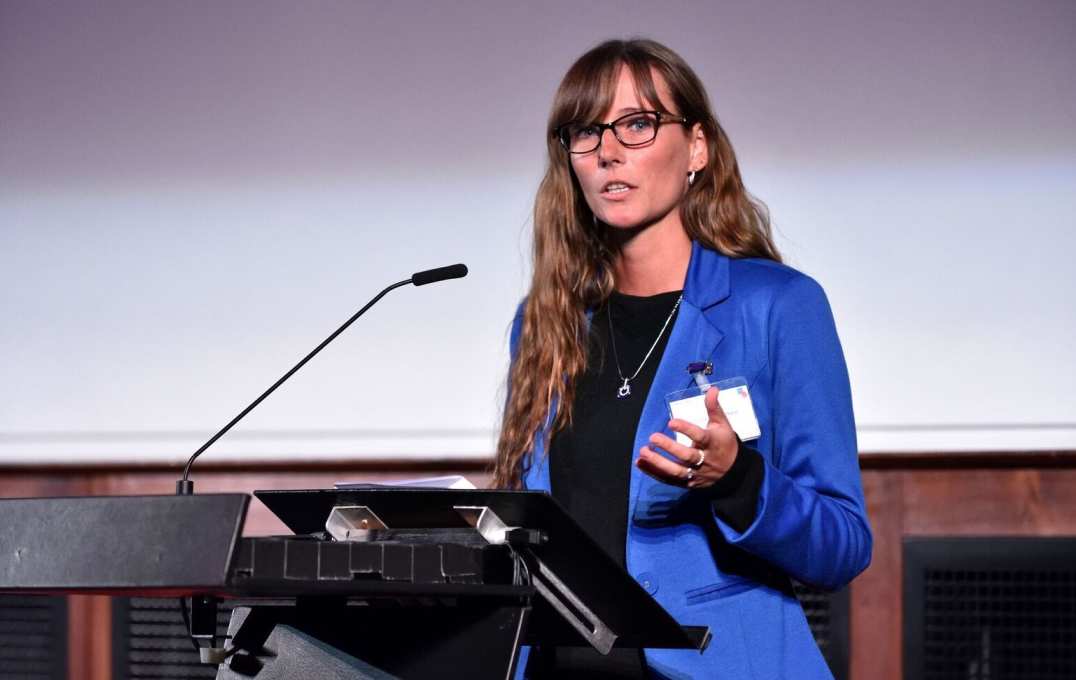

Here’s a batch of fresh news and announcements from across Imperial.
From new insights into star formation, to an annual blast injury conference, here is some quick-read news from across the College.
Extreme starburst galaxies
Current theories predict a maximum amount of stars that a galaxy can produce each year. But now, a research team led by Imperial have confirmed some galaxies – called extreme starburst galaxies – can produce up to six times as many stars as was thought to be the limit.
The highest amount of star formation they found was 30,000 solar masses per year – equivalent to the mass of 30,000 Suns. The theoretical limit was thought to be 5000 solar masses per year, so there is now a puzzle about what the true maximum rate of star formation might be, and how such extreme star formation rates can exist.
Some galaxies also produced extra brightness by having an ‘active galactic nucleus’ – a supermassive black hole in their centre that is accumulating matter. The team were able to determine a relationship between the star formation rate in these galaxies and the mass of the black hole.
Read the Astronomy & Astrophysics journal article: Extreme submillimetre starburst galaxies
Eggs in baskets threat to whole economy
 Dr Harjoat S. Bhamra from the Business School has published research showing that the finances of individual households (often dismissed by macroeconomists) actually play an important role in wider economic prosperity.
Dr Harjoat S. Bhamra from the Business School has published research showing that the finances of individual households (often dismissed by macroeconomists) actually play an important role in wider economic prosperity.
Dr Bhamra and his co-authors found households invest disproportionately in companies with which they are familiar, or which operate locally. This can have potentially disastrous consequences, tying the entire fate of whole families to the fortunes of a small number of businesses.
On the other hand, if governments encouraged households to diversify their investments, it could prove a better spur to economic growth than anything that can be achieved through monetary or fiscal policy.
Read more about Dr Bhamra’s research on IB Knowledge.
Patients are the driving force for HIV research
 Huge progress has been made in the awareness, prevention and treatment of HIV in recent years, but a feature piece from The Guardian asks if we will ever eradicate the disease.
Huge progress has been made in the awareness, prevention and treatment of HIV in recent years, but a feature piece from The Guardian asks if we will ever eradicate the disease.
Imperial’s Professor Sarah Fidler, who works with patients, says that while antiviral availability and approaches such as ‘kick and kill’ have been powerful in the fight against the virus, patient advocacy and dedication are the main driving forces between the speed of research developments.
“It’s still a very stigmatising condition. People don’t feel comfortable with talking about it, as they might with diabetes or cancer,” she told The Guardian. “People still feel that they are somehow different and that’s what makes people join together, they relate to these other people who have the virus. They are a potent advocacy force.”
Read the full Guardian article online: Is a cure for AIDS within reach?
Antimicrobial resistance on the world stage
 World leaders gathered in Buenos Aires last weekend for a G20 summit filled with warm handshakes, cold shoulders and a very crowded political agenda. Imperial researchers worked to keep the threat of antimicrobial resistance (AMR) on the list of discussion topics.
World leaders gathered in Buenos Aires last weekend for a G20 summit filled with warm handshakes, cold shoulders and a very crowded political agenda. Imperial researchers worked to keep the threat of antimicrobial resistance (AMR) on the list of discussion topics.
In a feature for the accompanying G20 magazine (given to attendees) Professor Alison Holmes highlighted the burden of AMR, particularly among low and middle-income countries, which are expected to see 90% of the estimated 10 million deaths from AMR by 2050.
She writes: “Increasing AMR combined with the high risk of acquiring infection, severely compromises patient outcomes and represents an interlinked and intractable problem.”
Read the full G20 magazine article online (Page 39)
Blast Injury Conference 2018
Imperial hosted its annual Blast Injury Conference in November. Leading the presentations were BBC journalist Stuart Hughes, who was injured while on assignment in Iraq, and Dr Emily Mayhew, who studies the plight of children injured by explosive devices.
Next year, the conference will be extended to a two-day event in the summer.
–
Want to be kept up to date on news at Imperial?
Sign up for our free quick-read daily e-newsletter, Imperial Today.

Article text (excluding photos or graphics) © Imperial College London.
Photos and graphics subject to third party copyright used with permission or © Imperial College London.
Reporters
Andrew Youngson
Communications Division
Ryan O'Hare
Communications Division

Contact details
Tel: +44 (0)20 7594 2410
Email: r.ohare@imperial.ac.uk
Show all stories by this author

Michael Mills
Business School
Hayley Dunning
Communications Division

Contact details
Email: press.office@imperial.ac.uk
Show all stories by this author

Caroline Brogan
Communications Division

Contact details
Email: press.office@imperial.ac.uk
Show all stories by this author









Leave a comment
Your comment may be published, displaying your name as you provide it, unless you request otherwise. Your contact details will never be published.